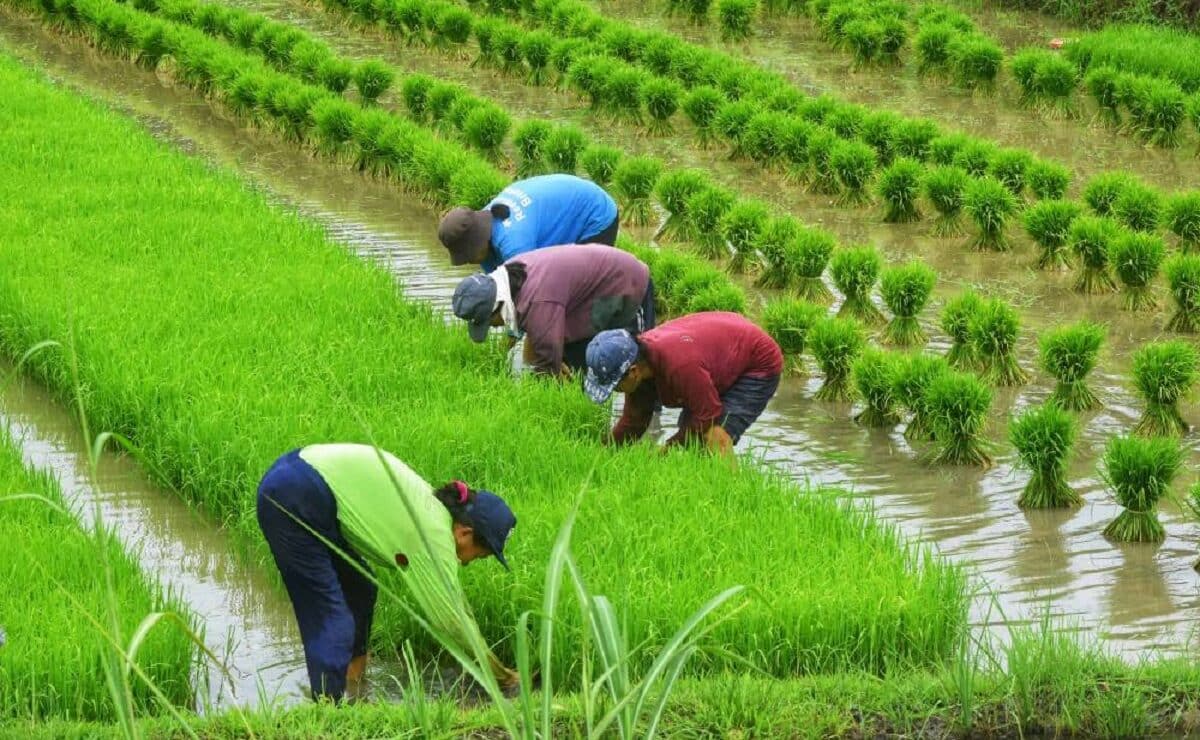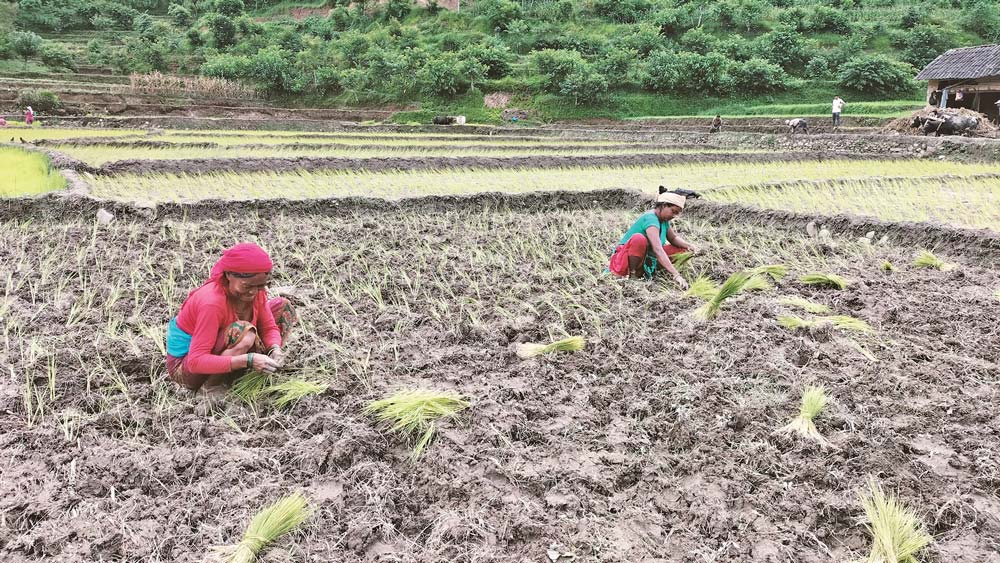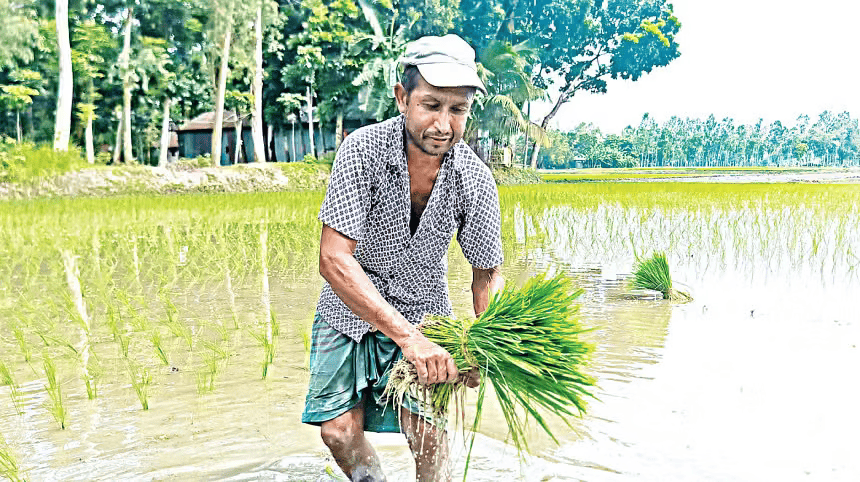Tags
Swift completion of irrigation infrastructure to boost rice production
Rice is increasingly favoured as a staple food and irrigation is being increased.
In Summary
- This will boost production and reduce the import bill
- Farmers are now doubling their cropping cycles with help of the Thiba Dam and the Bura Irrigation and Settlement Rehabilitation project

Gilbert Maluki, National Irrigation Authority chairman and rice farmer, Stephen Njaramba in Bura Irrigation Scheme during a familiarization tour of the NIA Board.
Image: NIA
The National Irrigation Authority is working with speed to complete irrigation infrastructure in the Mwea, Bura and Tana Irrigation schemes.
Completion will boost rice production and reduce the import bill.
NIA’s Gilbert Maluki said government’s irrigation projects such as the Thiba Dam and the Bura Irrigation and Settlement Rehabilitation project support rice farmers in doubling their cropping cycle and reducing the country’s rice deficit.
“Farmers have embraced what has been invested and are doing double-cropping. Initially, farmers used to do one crop in the Mwea Irrigation Scheme before the Thiba Dam. But with the dam, they have moved to double-cropping,” he said.
The chairman spoke to the media during a familiarisation tour of the board constituted in October 2023.
“We are at 64 per cent completion of the Thiba Dam and 5,000 acres will be under irrigation by May this year,” Maluki said.
In total, the dam will put 10,000 acres under irrigation by the end of the year, bringing the total acreage under irrigation and rice farming in Mwea to 35,000 acres.
Maluki said the Bura Irrigation and Settlement Scheme Rehabilitation project will be complete by this year and more farmers can venture into rice farming.
Raban Kiplagat, from the Ministry of Agriculture and NIA board member, said rice is becoming an important staple food for Kenyans, hence, the need to improve production.

Gilbert Maluki, National Irrigation Authority (NIA) chairman, NIA Board of Directors and NIA officials on a familiarization tour of the board in Bura and Tana Irrigation Schemes.
Image: NIA
“To ensure farmers produce adequately, the Ministry of Agriculture has been providing subsidised fertiliser and controlling pests like the quelea birds, snails and diseases. These efforts will improve the lives of farmers and produce enough food for the country,” he said.
Kiplagat said the government is partnering with county governments to spray and protect the crops.
“There is also a new pest, a snail that has encroached on rice fields. The snails are wreaking havoc on the crops and the ministry and researchers are working to manage this pest,” he said.
“For now, we appreciate the home-grown solutions farmers are using to control the snail. They are also using the System for Rice Intensification which has proved to be an effective method. This is also a plus because it uses less water and therefore more area can be put under irrigation.”
NIA CEO Charles Muasya said the acreage under rice production is about 80,000. This accounts for about 240,000 tonnes of rice produced in Kenya.
The national demand in the country is 1.1 tonnes.
“We have started a journey to increase the area under irrigation to bridge that gap between now and 2030 and produce the additional metric tonnes,” Muasya said.
Mwea Irrigation scheme is the largest contributor of locally produced rice, accounting for more than 70 per cent.
Other rice producing areas are Ahero, West Kano, Bunyala, Lower Kuja and now Bura and Tana Irrigation Schemes.
“To meet the country’s rice demand of about 1.1 tonnes per year, the government aims to increase the area under rice production from the current 80,000 acres to 200,000 acres by 2030,” Muasya said.
“This will ensure an increase of produce from the current 240,000 tonnes per year to over one million tonnes per year. This will not only ensure production of enough rice but also stop importation of rice and even offer opportunities to export the supplies.”
Muasya said completion of Thiba Dam will ensure enough water to irrigate 35,000 acres in Mwea twice a year.
The Authority is finalising irrigation canals to ensure the cropped areas increase from the current 30,600 to 35,000 acres.
Muasya said completion of the Bura Gravity canal in the Bura Irrigation Scheme, in the middle of this year will ensure another 10,000 acres is put under rice irrigation.
In the Bunyala Irrigation Scheme, completion of the Lower Nzoia Irrigation Project will ensure another 10,000 acres is irrigated. Phase one of the project will be completed by the end of this year.
In Ahero, there are plans to rehabilitate its water abstraction system and canal to enhance efficiency and expand the crops.
“Meanwhile, we wait for the implementation of Koru Soin Dam to provide enough water to open up the entire potential in Ahero. The authority is also opening up other frontiers for rice farming with Tana River, Garrissa, Taita Taveta and Migori to increase irrigated areas under rice,” the CEO said.

A bird’s eye view of Tana Irrigation Scheme
https://www.the-star.co.ke/news/star-farmer/2024-03-12-swift-completion-of-irrigation-infrastructure-to-boost-rice-production/Published Date: March 12, 2024






